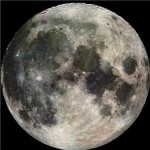 Can technology help ease the U.S. water crisis?
Can technology help ease the U.S. water crisis?
Some utilities and private well owners hope so, as about 40% of the continental U.S. battles some form of drought and demand for water continues to grow. Worries about water shortages are heating up in various areas across the nation, especially in California and other Western states, where a punishing drought has entered its third year.
In an effort to encourage conservation and manage water use more efficiently, utilities and consumers are turning to a variety of new technology tools, including software and mobile apps that let households know just how much water they are using and how that usage stacks up against the neighbors. There also are sensors that can determine when wells are running low, and leak-detection systems for homes that send alerts and shut off the water when problems are suspected. Read more





